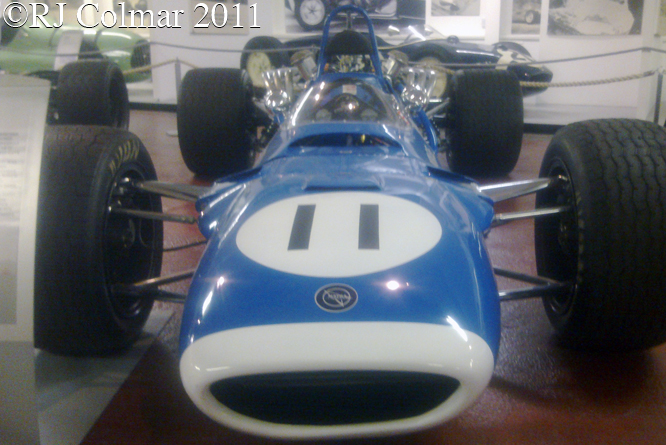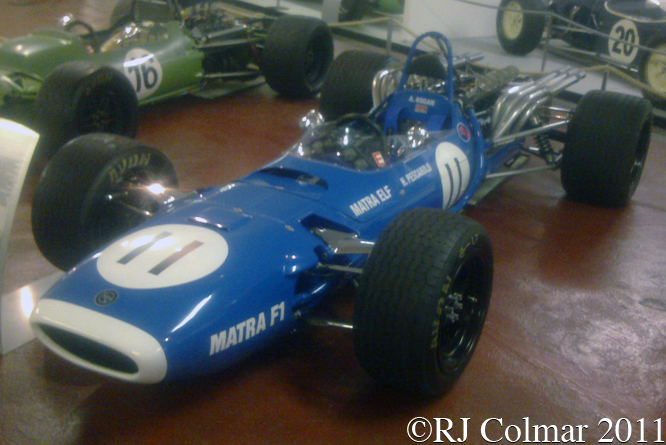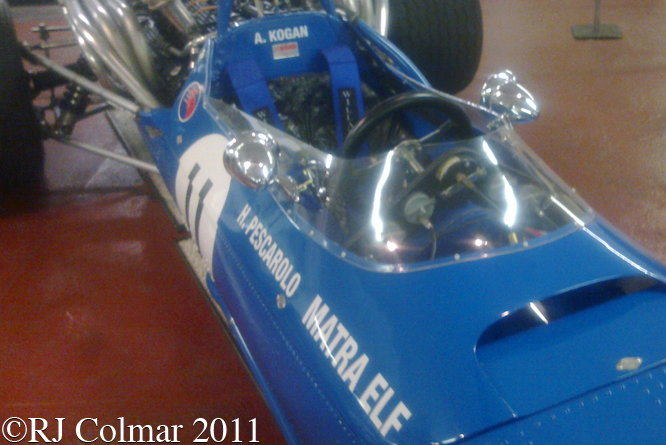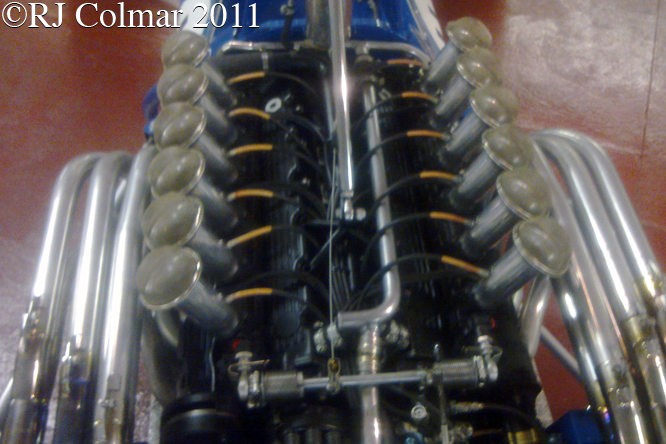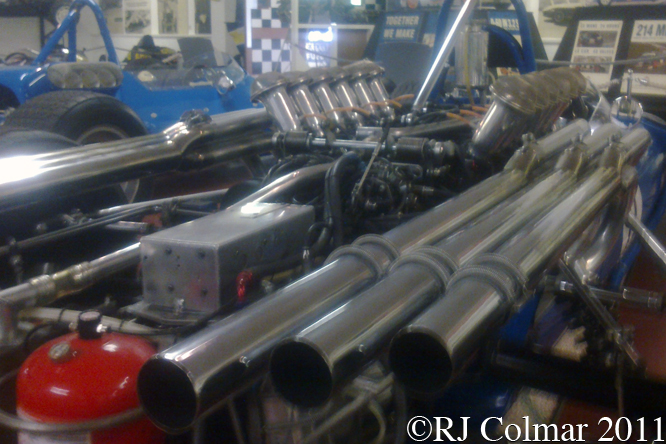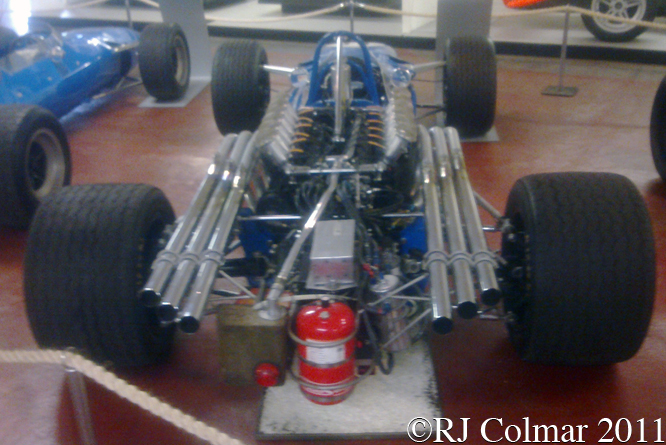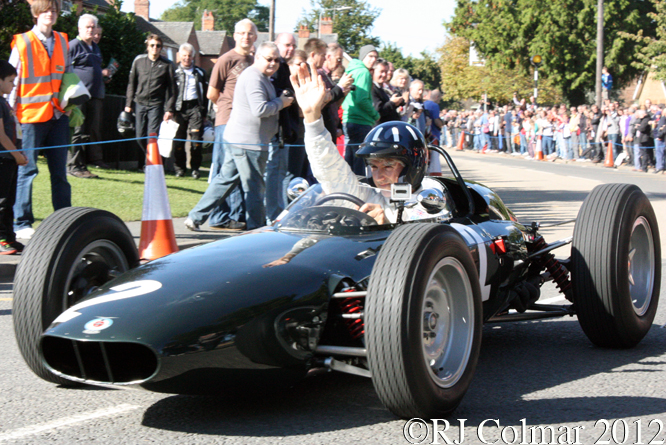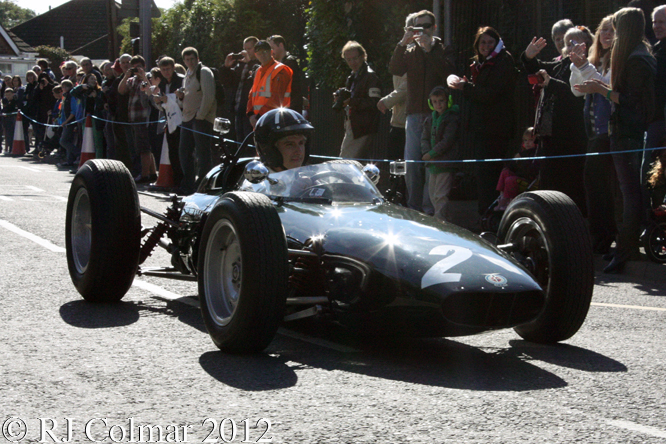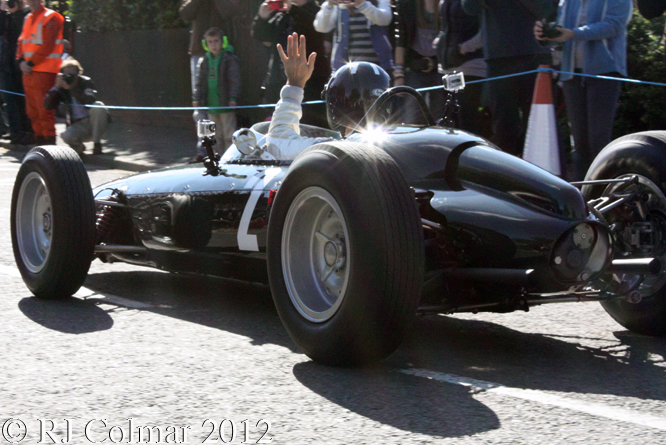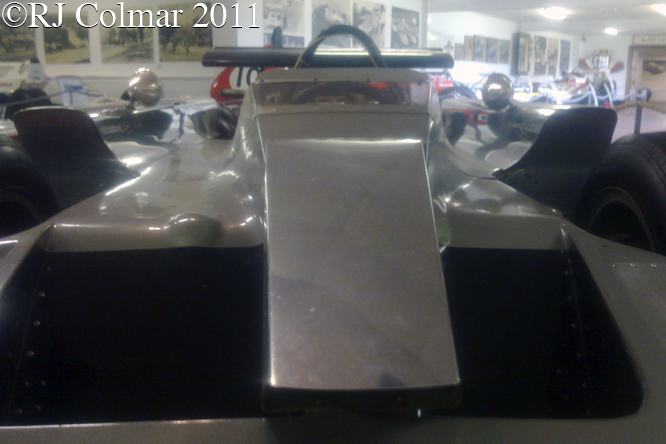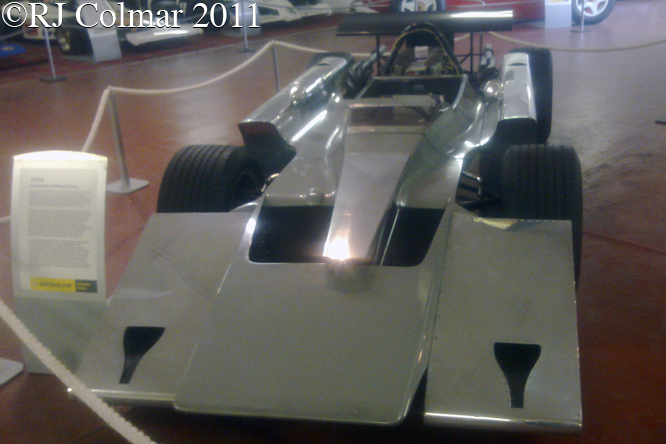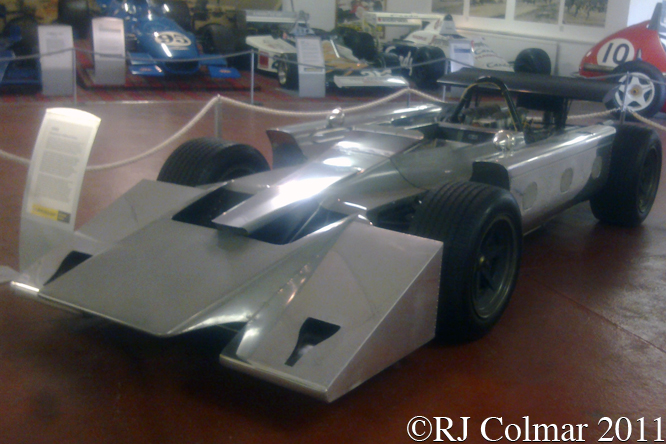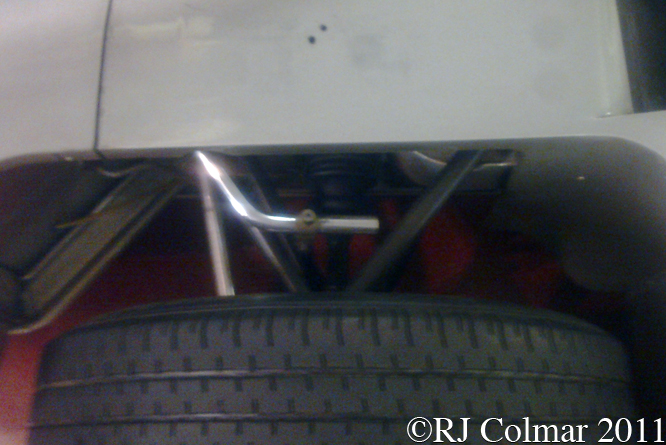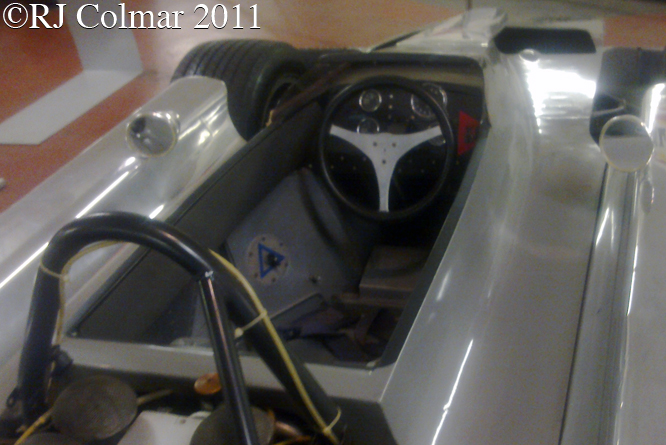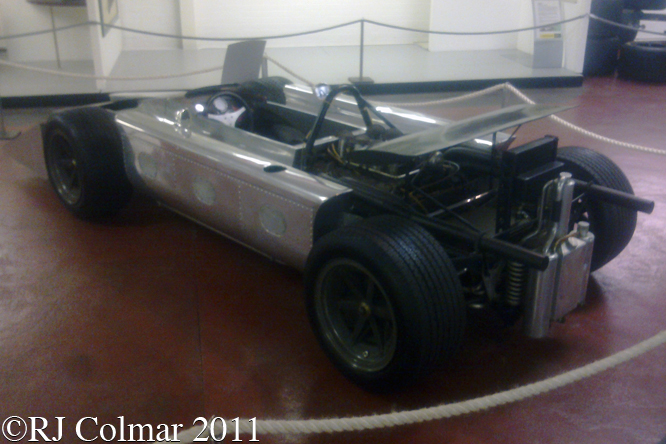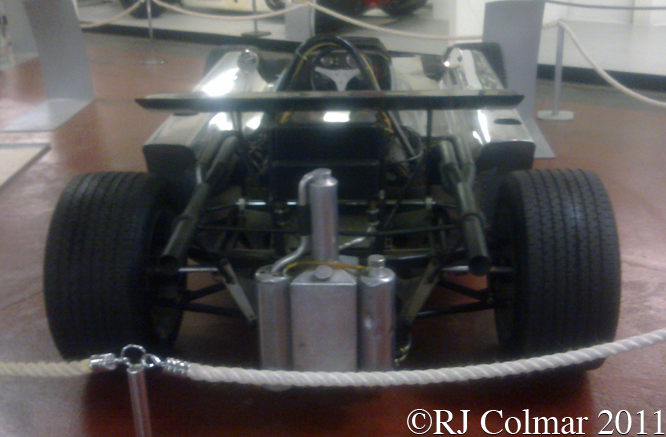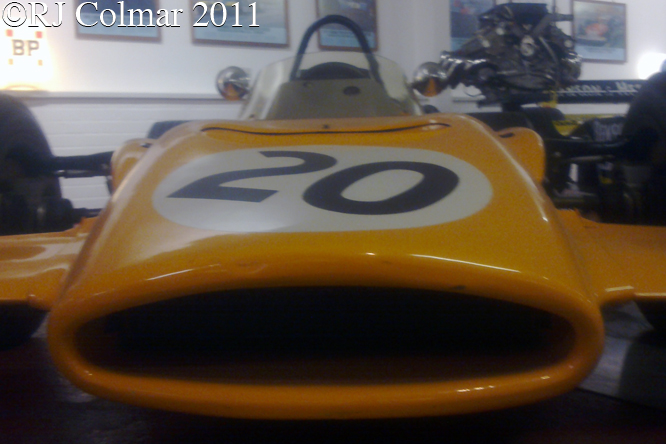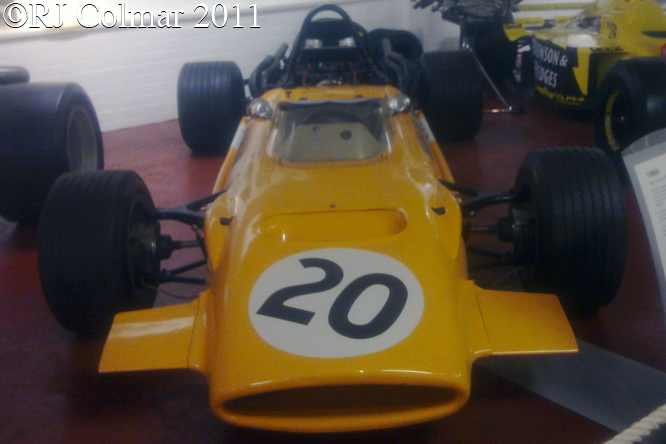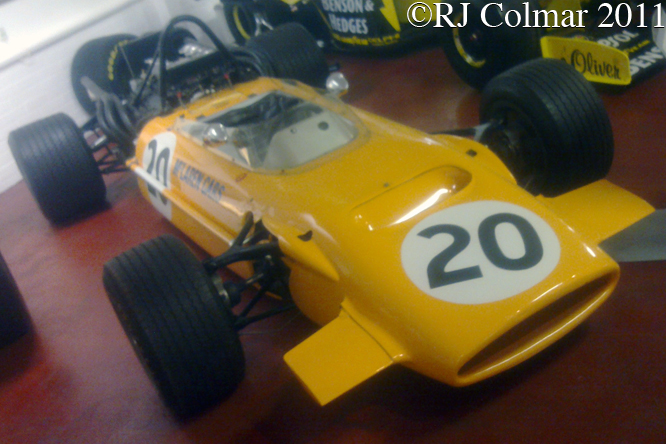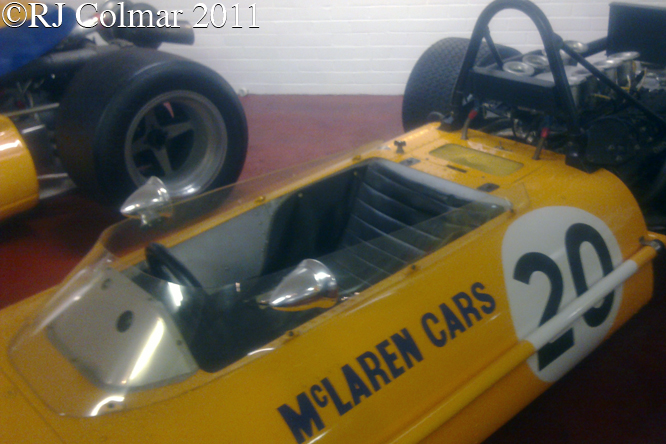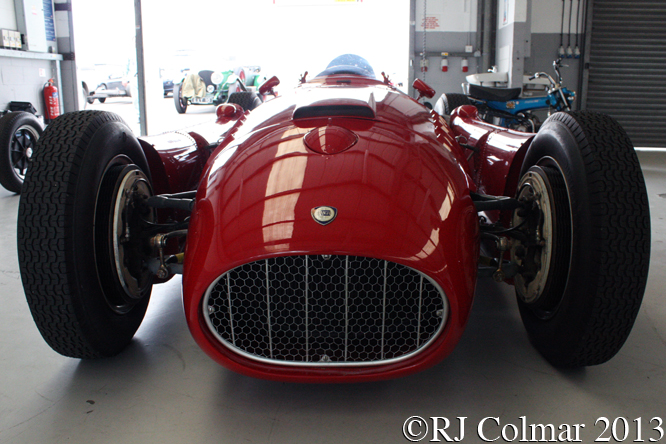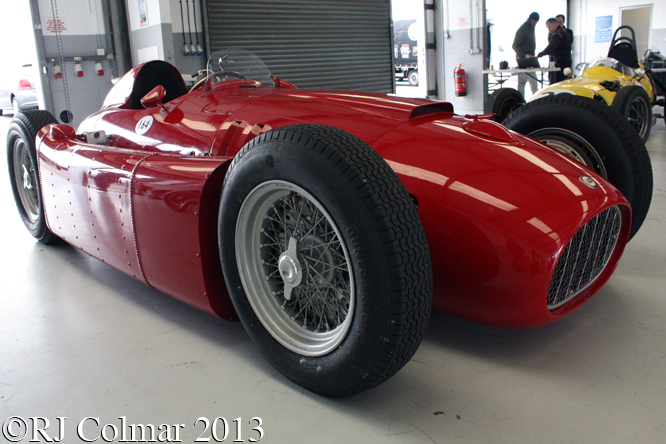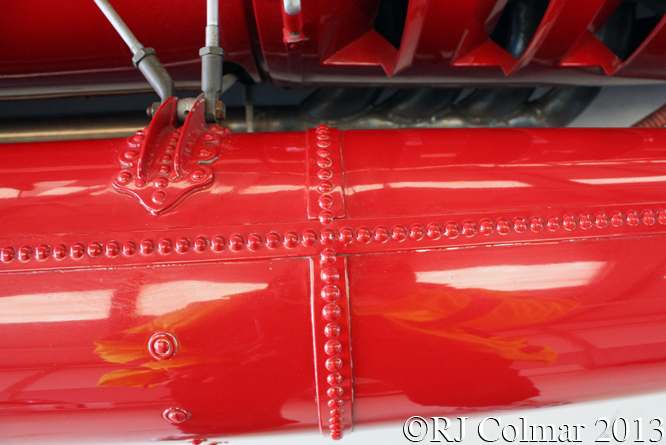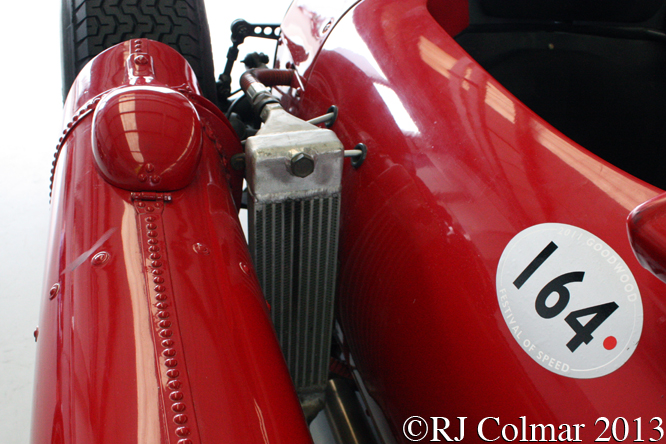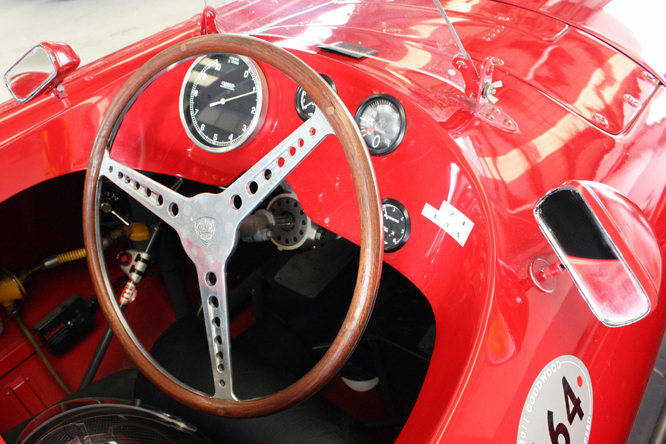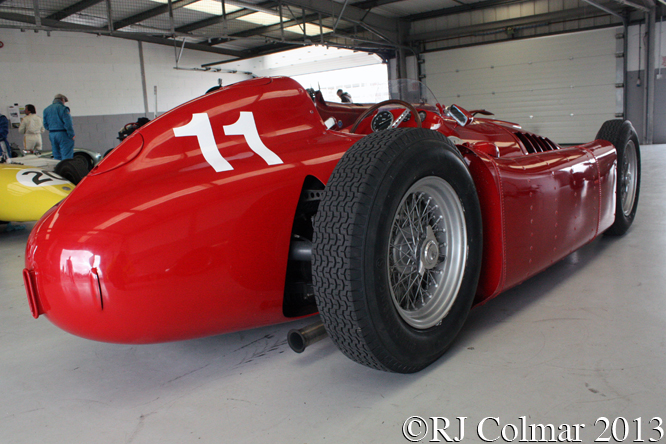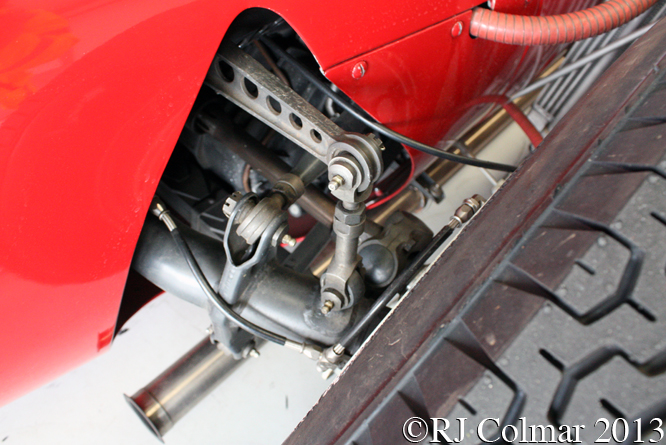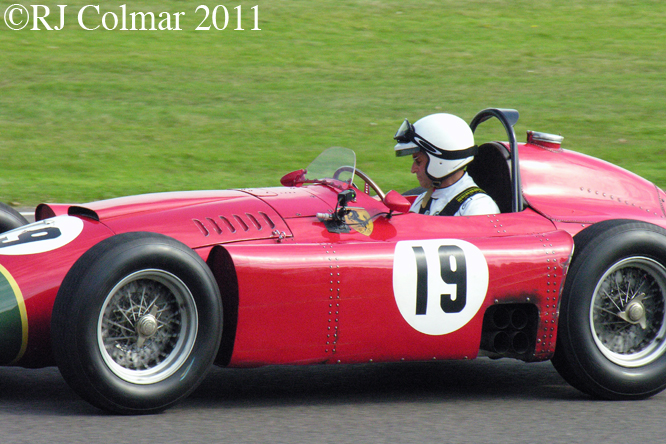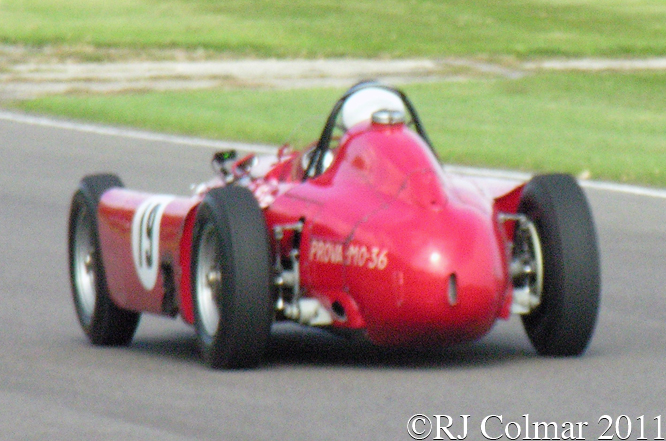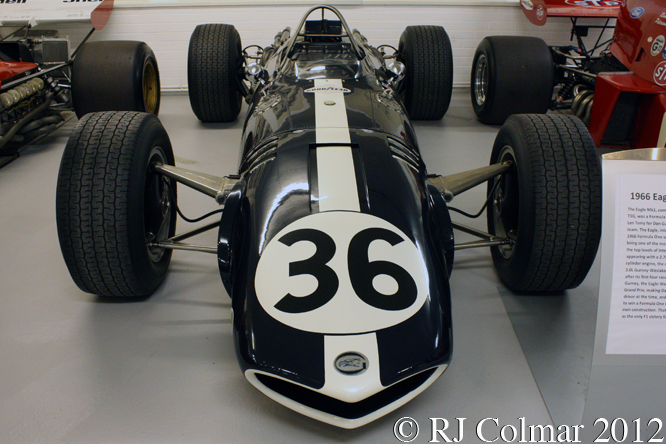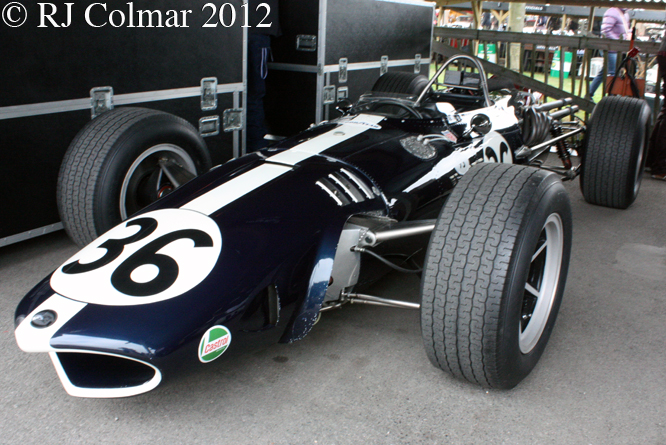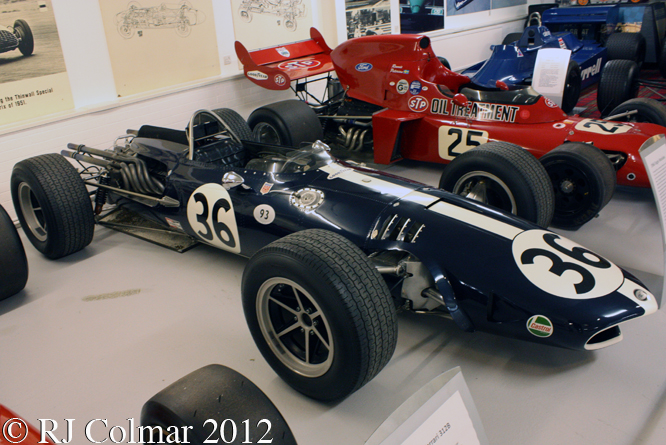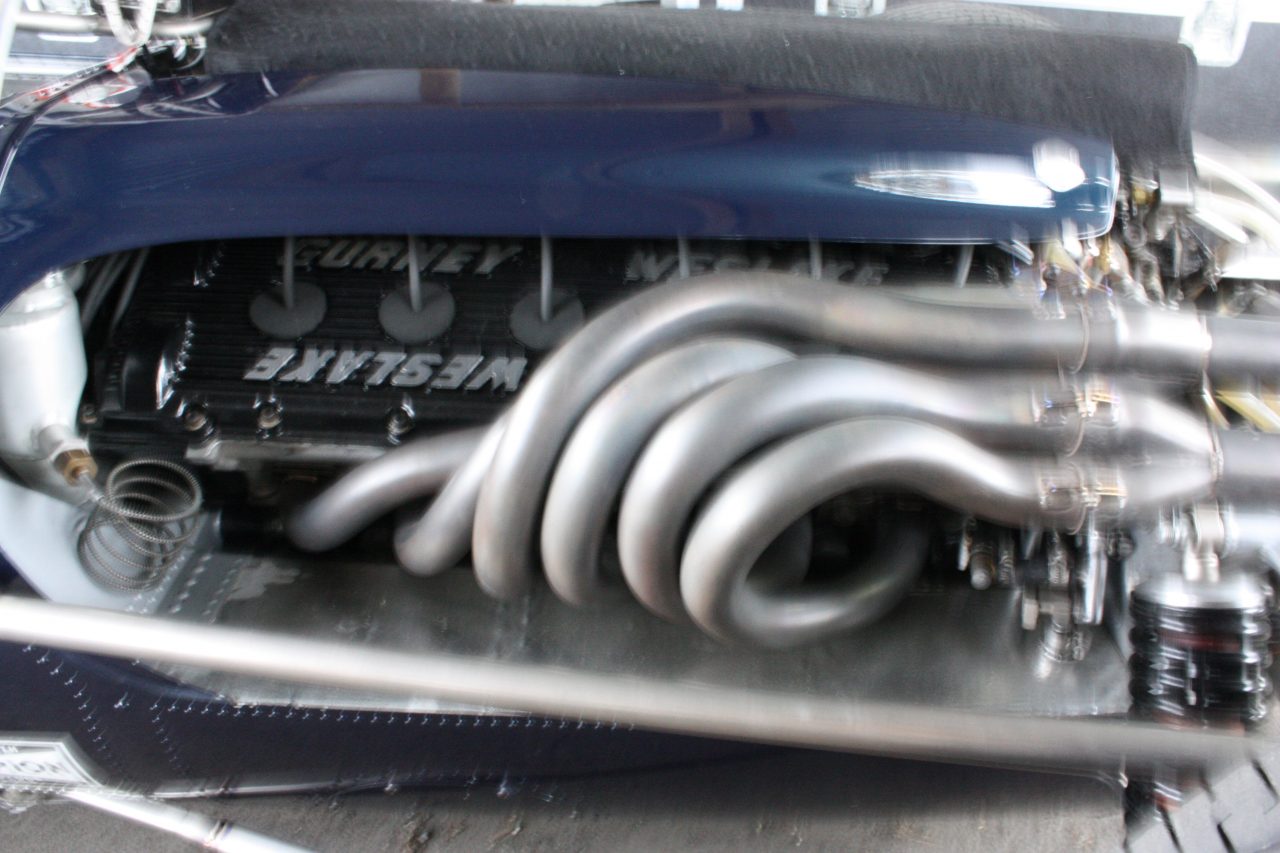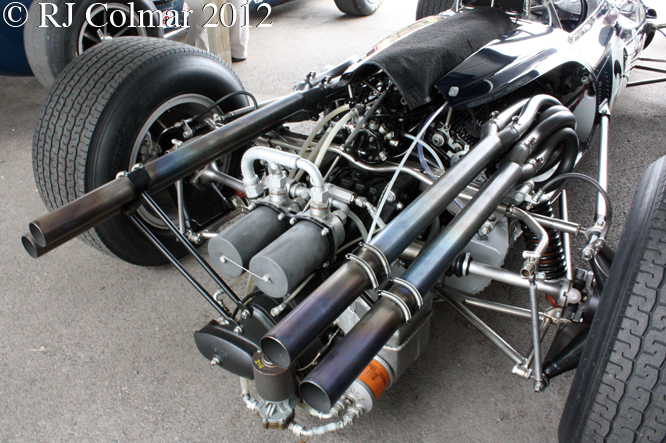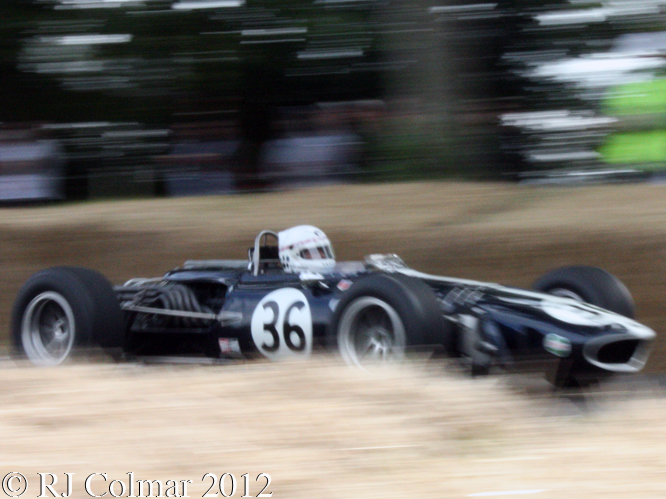Last weekend saw the 20th Anniversary celebrations of the Goodwood Festival of Speed. According to tea total journalist Doug Nye the event only got off the ground because he was present at a rather drunken evening at which Lord March and some friends were fantasising about an event which might attract a few thousand motor enthusiasts. Next morning when Doug reminded the Lord of what had been said they decided to act and so was born the Goodwood Festival Of Speed which has become one of the highlights of the British Motoring Season.
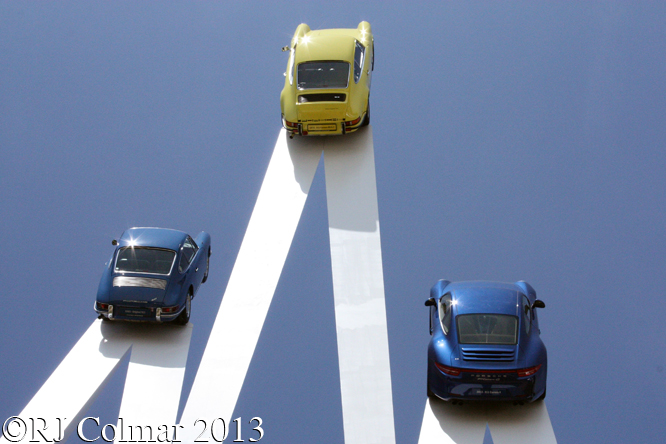
The event has become so big that it sells out on both the Saturday and Sunday and an extra day has been added on the Thursday, called the “Moving Motor Show” on which the hill climb track is turned over to corporate sponsors who entertain their guests with rides up the hill. It was on the Thursday that I went with my parents after my Dad found a free ticket offer in the “Daily Telegraph“. Many anniversaries besides Goodwood’s 20th were being celebrated, the three Porsche’s above formed the tip of a sculpture by Gerry Judah celebrating the 50th Anniversary of the Porsche 911 featuring a 1963 911 on the left, a ’73 Carrera RS in the middle and a 2013 Carrera 4 on the right.
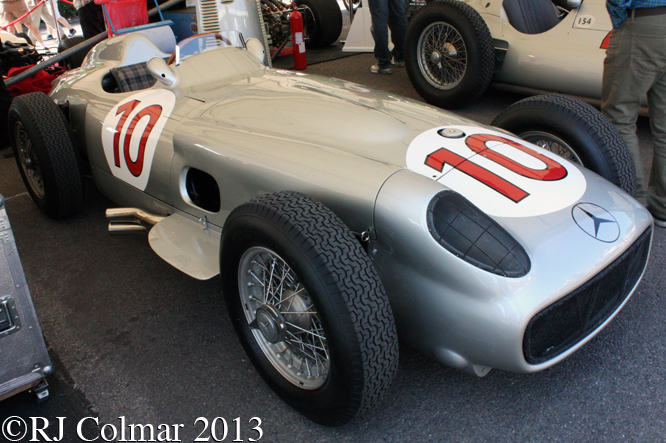
On the Friday a 1954 Mercedes Benz W196 similar to the one pictured here was sold at the Bonham’s Festival of Speed Auction for US$ 29.6 million to become the most expensive car ever sold at auction. John Lennon’s Blue ’64 Ferrari 330GT fetched US$ 543,750 setting a new record for the 330 GT 2+2 model.
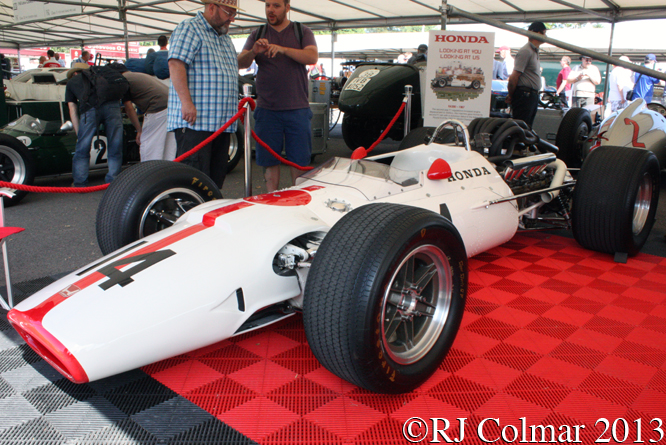
In the autumn of 1967 my folks purchased their first television, a black and white model, one of my earliest memories of it was a news cast featuring the 1967 Italian Grand Prix which was won by John Surtees driving this very V12 Honda RA300, a car that was very easy to distinguish from the rest of the field because it was white and all the others were various shades of grey.
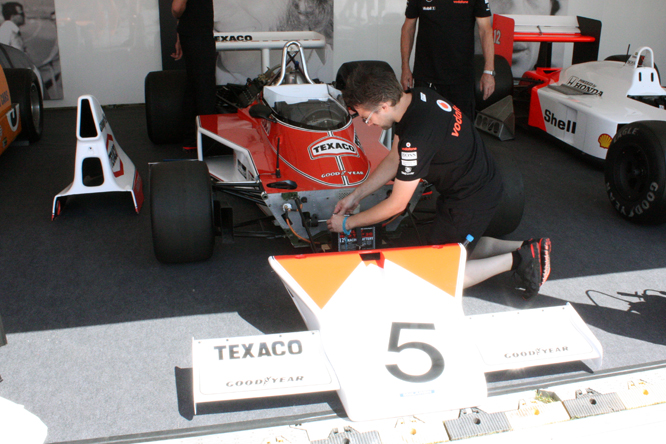
Emerson Fittipaldi moved from Lotus to join the McLaren team which had relieved BRM of Marlboro sponsorship and Lotus of Texaco sponsorship for the 1974 season. Emerson driving a Marlboro Team Texaco McLaren M23 ended up winning a very open World Drivers Championship by just 3 points from Clay Regazzoni driving a Ferrari 312 B3.
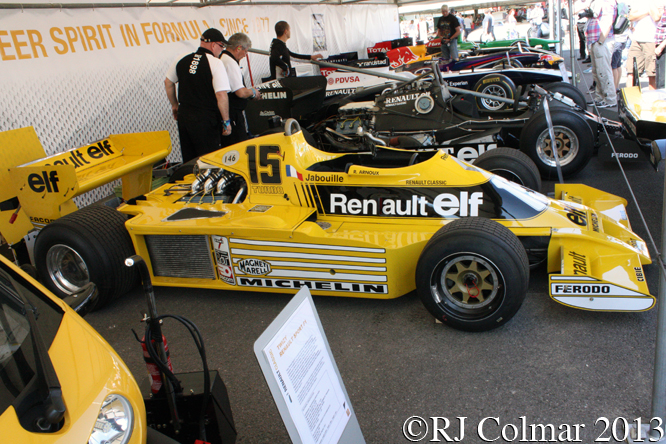
Having won Le Mans in 1978 Renault put all of it’s effort into winning the Formula One Drivers and Constructors championships with the first turbocharged Formula One car. Above is the 1978 RS01 which proved fast on occasion, particularly at altitude, but fragile.
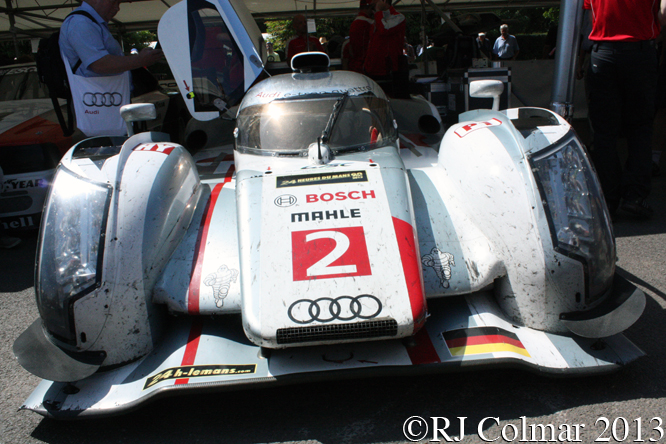
Fresh from victory lane, and looking several thousand miles the worse for wear, in the 90th Anniversary edition of the Le Mans 24 hours was the Audi R18 E-tron Quattro driven by Tom Kristensen, Alan McNish and Loic Duval.
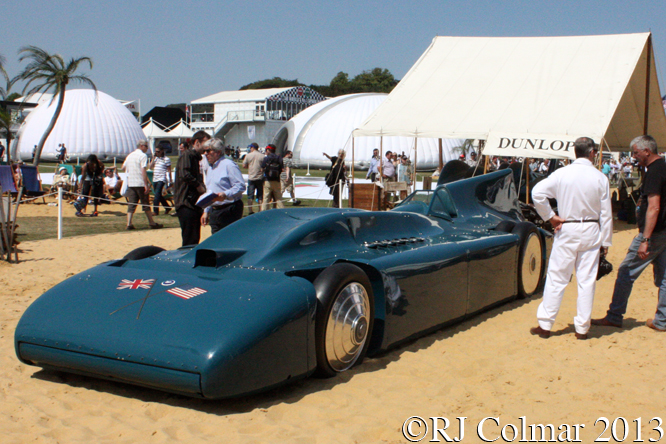
Sir Malcom Campbell became the first man on four wheels to exceed 300 mph when he set a new Land Speed Record at Bonneville of 301mph on September 3rd 1935 when driving the 2300 hp supercharged Rolls Royce V12 powered Campbell-Railton Blue Bird. The piece of land on which Blue Bird was displayed normally serves as Lord Marches cricket pitch.
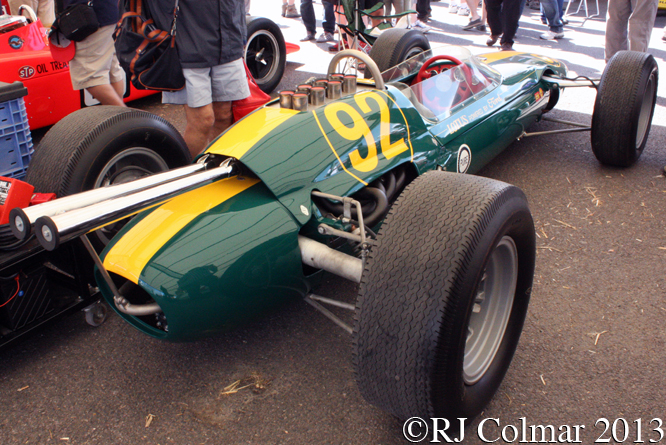
Regular readers will remember that the #92 Lotus Ford 29 driven by Jim Clark at Indianapolis in 1963 was destroyed in a fatal accident with Bobby Marshman at the wheel during a gruesome testing accident at Phoenix at the end of 1964. The car seen above is chassis #29/1 actually driven with a white and blue paint job by Dan Gurney to a seventh place finish at Indy in 1963. The car has been seen at the Indy Museum for many years (decades ?) bearing Jim Clark’s livery. The spare ’63 Lotus 29 chassis #29/2 currently carries the #91 white and blue livery used by Gurney.
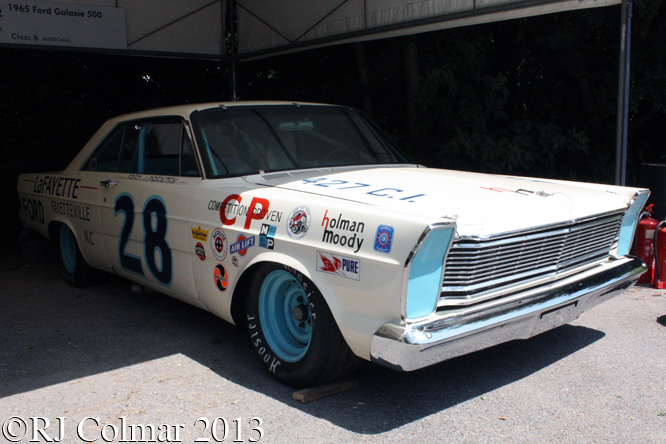
“According to the programme” the Ford Galaxie 500 above was driven to victory in the 1965 Daytona 500 by Fred Lorenzen and then given a ’66 body for testing at Daytona the following year, however a search on the internet show’s that this might not be the only car sharing the story.
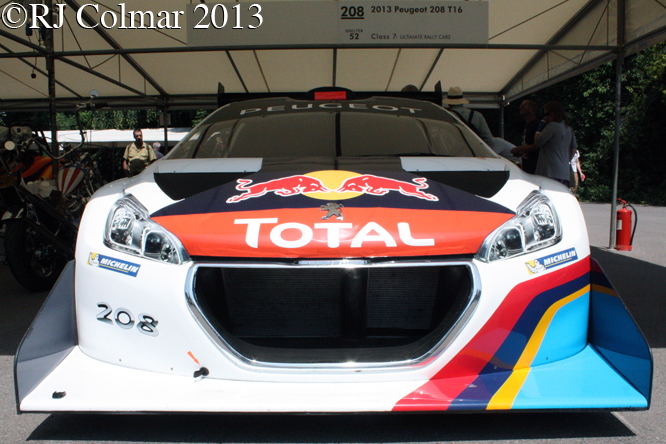
Another car to arrive at Goodwood from victory lane was the 875 hp twin turbo V6 Peugeot 208 T16 with which Alsatian 9 (nine) time World Rally Champion Sebastian Loeb won this years Pikes Peak race to the clouds hill climb in a mind bending 8m 13.8 seconds an astonishing 95 seconds faster than Rhys Millens 2012 full 12.42 mile course record of 9m 46.1s. Tighten your reality belts to see how Mr Loeb set the record in the film linked here.
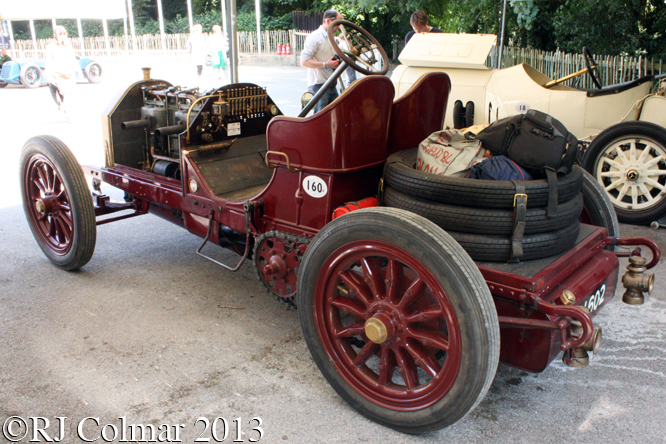
Any one who was reading GALPOT back in January might remember I spent a night and a day on the Exeter Trial being chased by a 4×4 Panda and following this 1903 Mercedes 60 hp Simplex crewed by Ben and Roger Collings, my appreciation of what these vehicles can do rose sharply as a result of the experience.
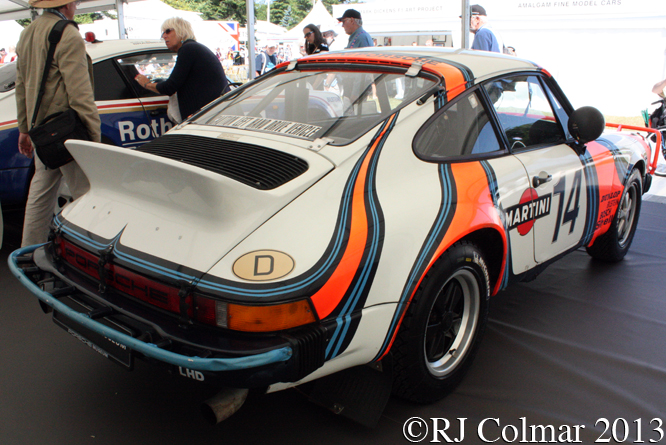
Car of the show for me was this 1978 Porsche 911 SC driven by Kenyan Vic Preston Jnr with co driver John Lyall to second place in the 1978 Safari Rally. I always thought if I was going to have a 911 for the road I may as well have one that could survive the rigours of Africa where I learned to drive and this one has a particularly cool paint job.
Over the coming months some of these vehicles will be featured in more depth.
Thanks for joining me on this “20th Anniversary Festival Of Speed” edition of “Gettin’ a li’l psycho on tyres”, I hope you will join me again tomorrow. Don’t forget to come back now !
Check out the latest from the Formula One silly season at Motorsports Unplugged on this link.


